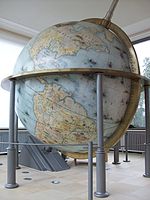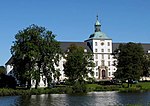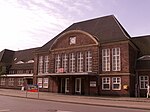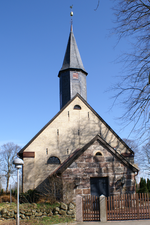Gottorf Castle

Gottorf Castle (German: Schloss Gottorf, Danish: Gottorp Slot, Low German: Slott Gottorp) is a castle and estate in the city of Schleswig, Schleswig-Holstein, Germany. It is one of the most important secular buildings in Schleswig-Holstein, and has been rebuilt and expanded several times in its over eight hundred years of history, changing from a medieval castle to a Renaissance fortress to a Baroque palace.It is the ancestral home of the Holstein-Gottorp branch of the House of Oldenburg, from which emerged in the 18th century, among other things, four Swedish kings and several Russian Emperors. It is situated on an island in the Schlei, about 40 km from the Baltic Sea.
Excerpt from the Wikipedia article Gottorf Castle (License: CC BY-SA 3.0, Authors, Images).Gottorf Castle
Schlossallee,
Geographical coordinates (GPS) Address Website External links Nearby Places Show on map
Geographical coordinates (GPS)
| Latitude | Longitude |
|---|---|
| N 54.511666666667 ° | E 9.5413888888889 ° |
Address
Schloss Gottorf
Schlossallee
24837 , Lollfuß
Schleswig-Holstein, Germany
Open on Google Maps









